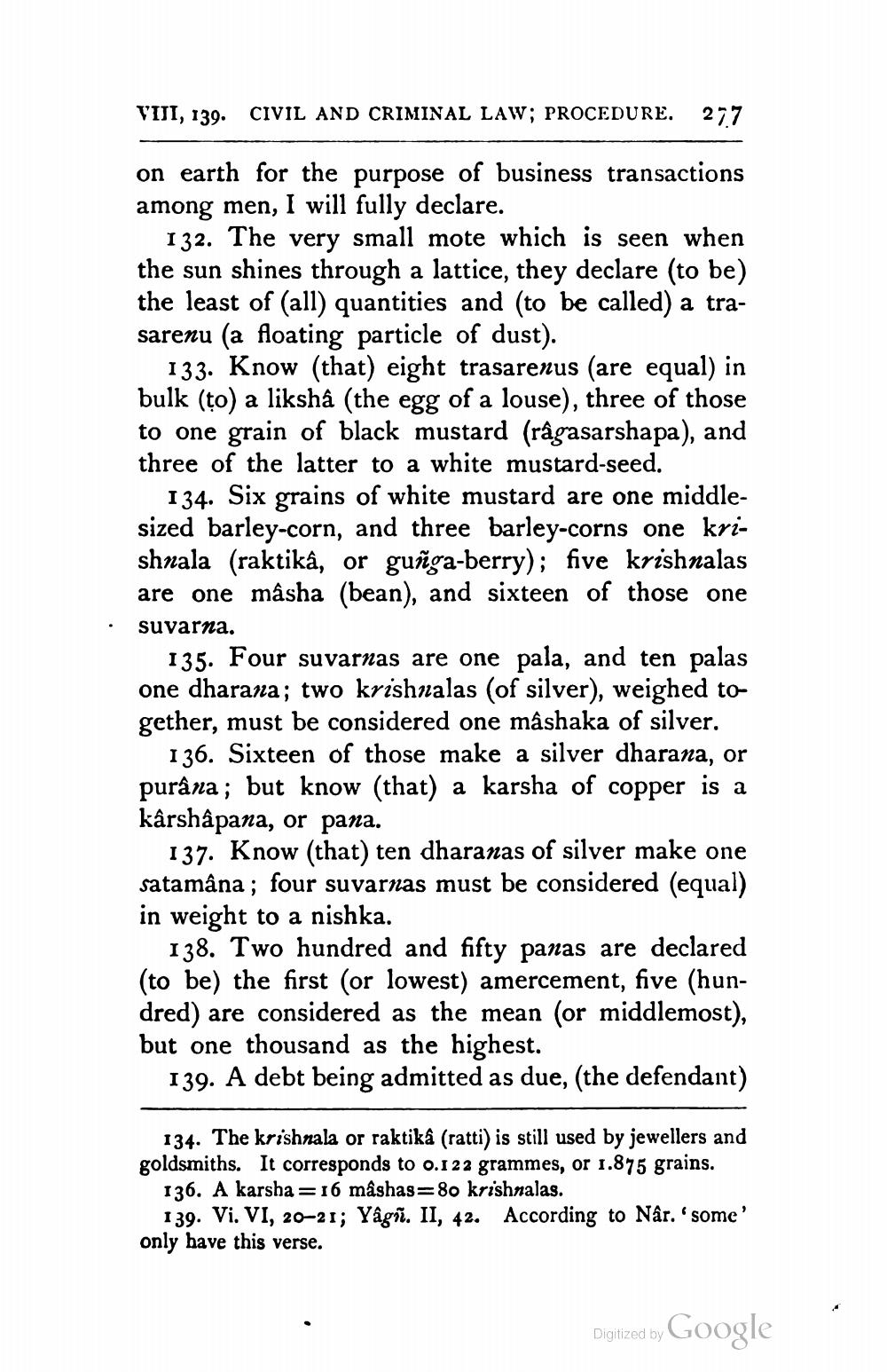________________
VIJI, 139. CIVIL AND CRIMINAL LAW; PROCEDURE.
277
on earth for the purpose of business transactions among men, I will fully declare.
132. The very small mote which is seen when the sun shines through a lattice, they declare (to be) the least of (all) quantities and to be called) a trasarenu (a floating particle of dust).
133. Know (that) eight trasarenus (are equal) in bulk (to) a liksha (the egg of a louse), three of those to one grain of black mustard (râgasarshapa), and three of the latter to a white mustard-seed.
134. Six grains of white mustard are one middlesized barley-corn, and three barley-corns one krishnala (raktika, or guñga-berry); five krishnalas are one mâsha (bean), and sixteen of those one suvarna.
135. Four suvarnas are one pala, and ten palas one dharana; two krishnalas (of silver), weighed together, must be considered one mâshaka of silver.
136. Sixteen of those make a silver dharana, or purâna; but know (that) a karsha of copper is a kârshapana, or pana.
137. Know (that) ten dharanas of silver make one satamâna; four suvarnas must be considered (equal) in weight to a nishka.
138. Two hundred and fifty panas are declared (to be) the first (or lowest) amercement, five (hundred) are considered as the mean (or middlemost), but one thousand as the highest.
139. A debt being admitted as due, (the defendant)
134. The krishnala or raktika (ratti) is still used by jewellers and goldsmiths. It corresponds to 0.122 grammes, or 1.875 grains.
136. A karsha = 16 mâshas= 80 krishnalas.
139. VI. VI, 20–21; Yâga. II, 42. According to Nar. 'some' only have this verse.
Digitized by Google




